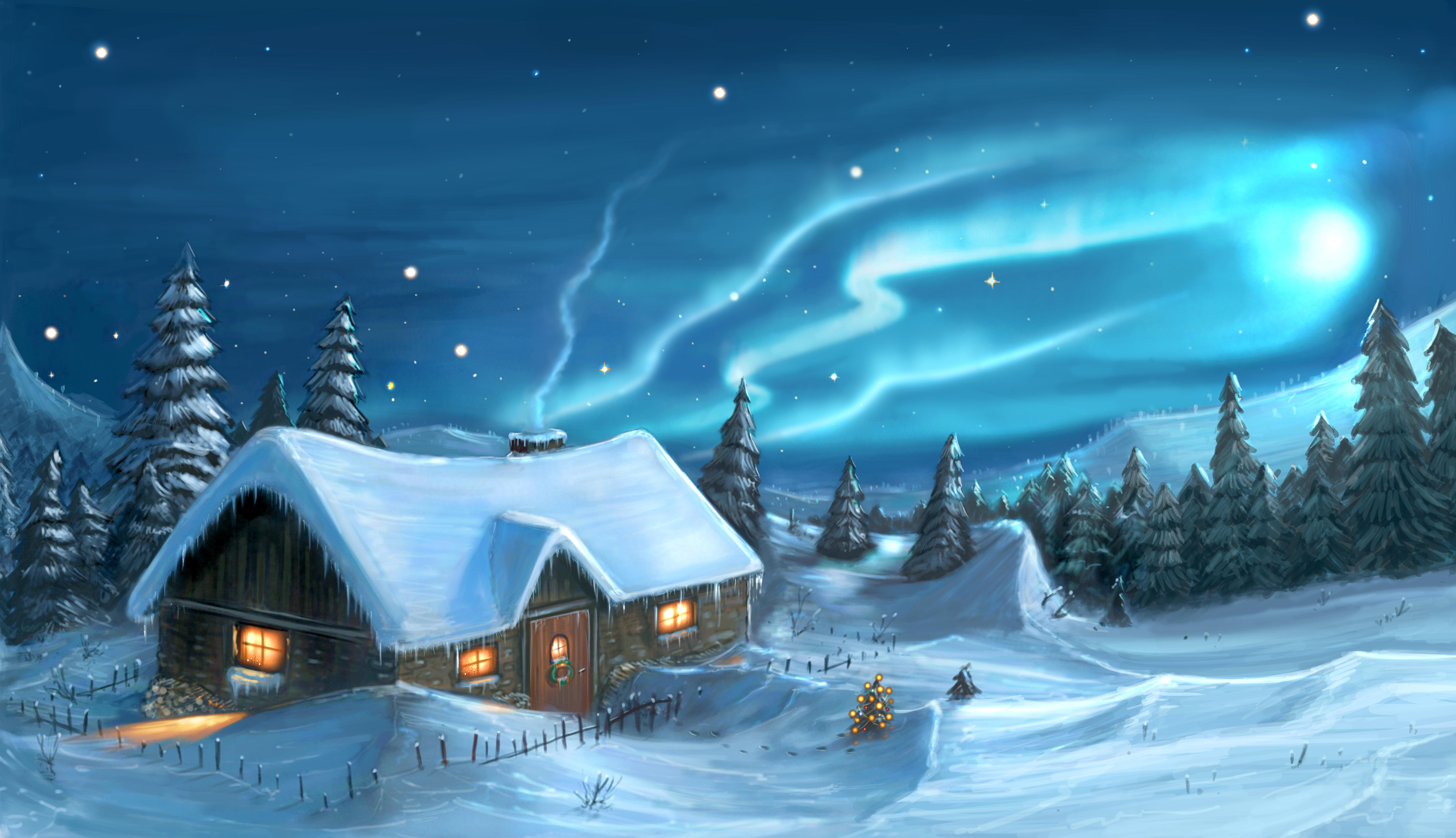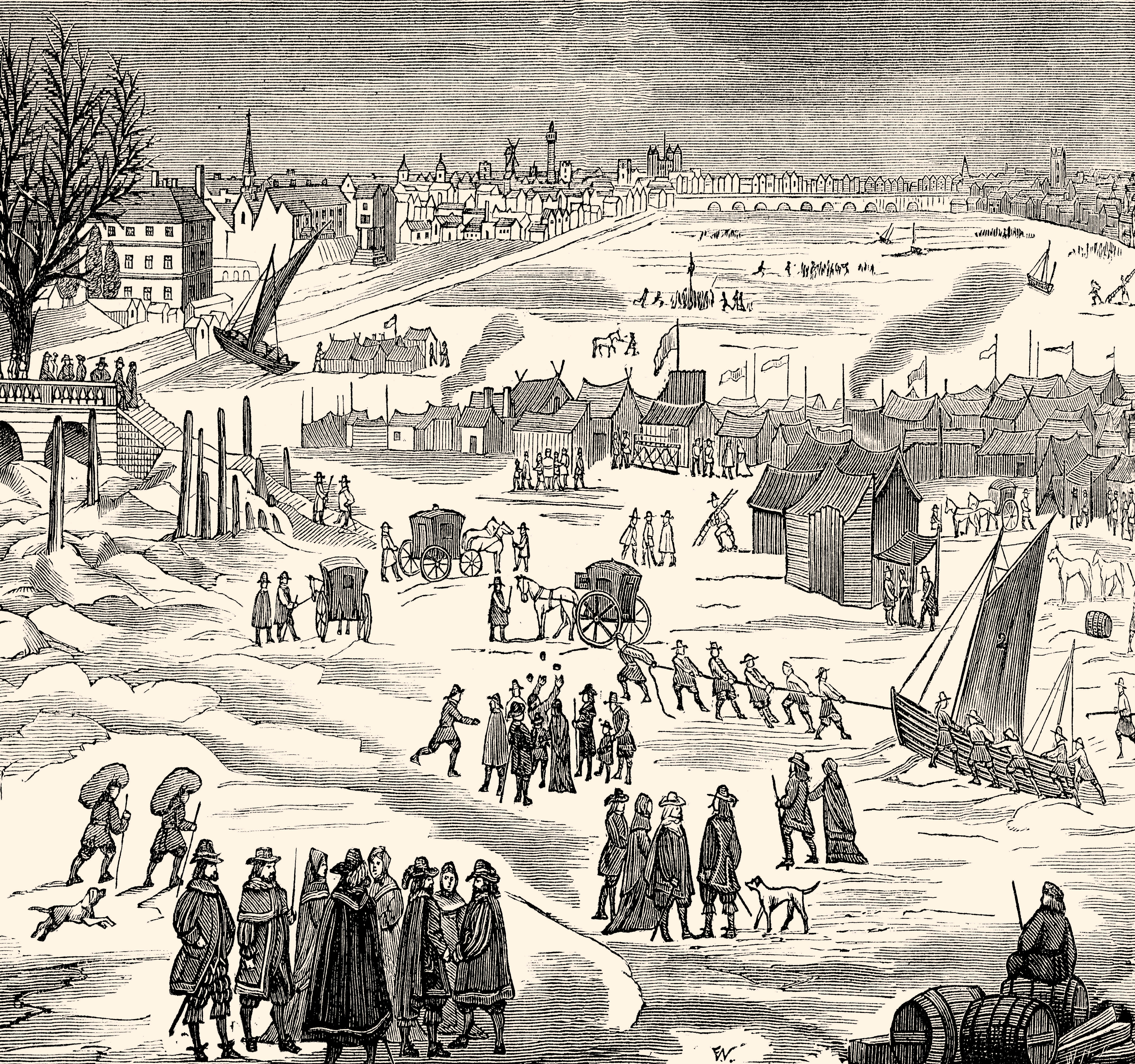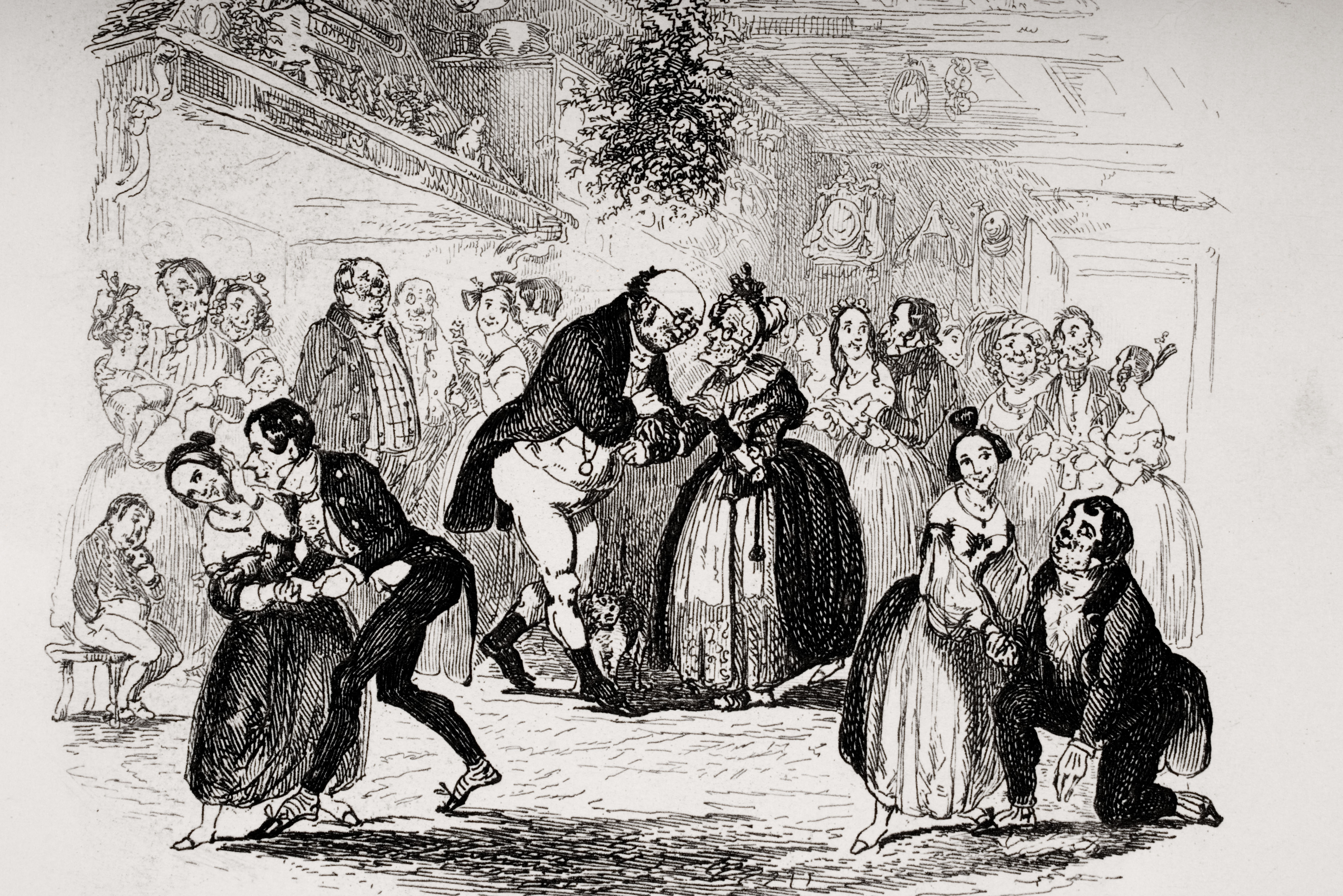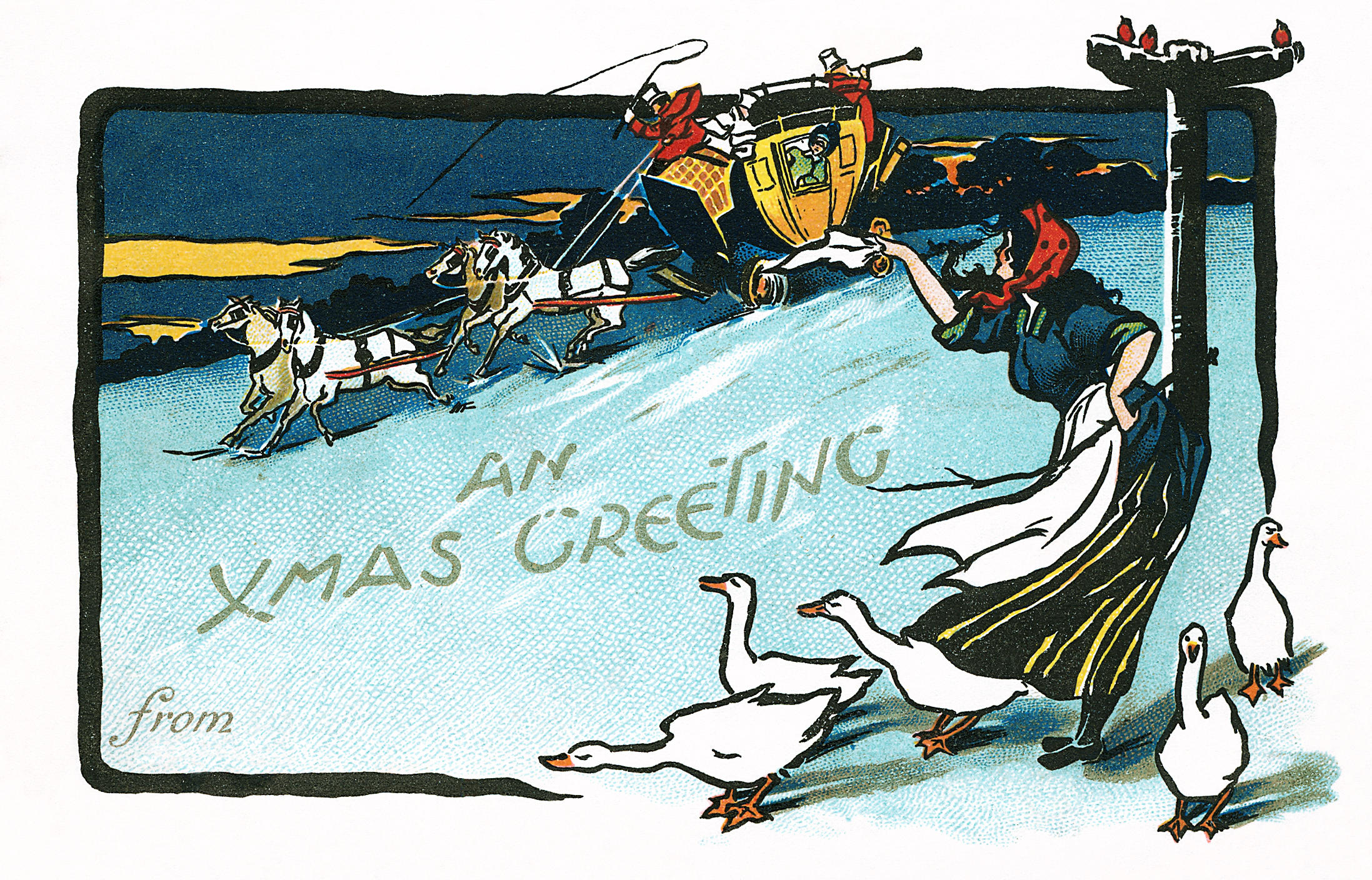The perennial fascination with snow at Christmas, and how it's all down to Charles Dickens and the Little Ice Age
Snow at Christmas is a rare sight across most of Britain, yet it’s indelibly intertwined in the collective imagination. Felicity Day explains why.


Nothing says Christmas like a picture-postcard snow scene, on the cover of Country Life, on a glitter-frosted greetings card or on a festive biscuit tin. The Christmas of our imagination — and, indeed, our dreams — is resolutely white. Yet why is this, when so rarely does the big day bring a blanket of snow?
At first glance, it seems logical to credit Charles Dickens with our yearning for a white Christmas. The theory goes that it was his own bitterly cold (although heart-warmingly happy) childhood Christmases that inspired him to give both The Pickwick Papers and A Christmas Carol a snow-covered backdrop and that, in doing so, he created a lasting feeling that the very best Christmases were white.
Certainly, born in 1812, Dickens experienced six white Christmases in the first nine years of his life. However, dig a little deeper into the snowdrifts of centuries past and it’s clear that the association pre-dates the author. He was by no means the first to pen a snowy festive scene and certainly not the first, nor the last, to experience one.
Between roughly 1550 and 1880, Britain was in the grip of what has become popularly known as the Little Ice Age — a period of intensely cold winters. Forget treetops glistening, frosts were persistently harsh and forbidding. The Thames froze solid with regularity until 1814; that it didn’t freeze so completely in later years is generally acknowledged to be the result of changes in the river infrastructure, rather than changes in temperature.

Country parson James Woodforde’s famous diaries are littered with complaints about the debilitating cold, both indoors and out: in the 1790s, he wrote that even the contents of the chamberpots froze indoors, as well as his household’s milk, bread and meat.
It only got colder. Christmas Day of 1830 was bleak — it was -12˚C at Greenwich — and Britain’s coldest Christmas Day on record is 1878, when the temperature hit -18.3˚C in Durham.
There was snow to contend with, too — it usually came thick and fast in the winter months and, sometimes, from September onwards. Snow drifts of 20ft deep or more weren’t uncommon, making roads completely impassable. In 1799, Woodforde was dismayed by its depths, writing that ‘people obliged to walk over hedges &c’ and ‘mail coaches &c unable to travel’ — a state of affairs that continued well into the following century. A teenage Queen Victoria found it inconvenient, writing on December 27, 1836, ‘snow very deep and very cold... I am very much annoyed not to have been able to get out now for two days’.
Exquisite houses, the beauty of Nature, and how to get the most from your life, straight to your inbox.
For Dickens’s contemporaries — the generation that created our modern Christmas, that is — the festive season was routinely snowy, generally bitterly cold and often a considerable trial. With his snow-covered scenes, Dickens was reflecting back to them the Christmas of their past and present — they knew it well — but the white Christmas had found its way into literature long before A Christmas Carol took the market by storm in December 1843. In Jane Austen’s Emma, her characters set out on Christmas Eve in a flurry of snow to attend a party, only to bundle back into the carriages as soon as it starts to settle. ‘Christmas weather,’ observes the amorous Mr Elton, ‘quite seasonable.’

Most crucially for its assimilation into the traditional Victorian Christmas, the harsh weather had become the conventional backdrop for stories that fondly recalled the trappings and traditions of Christmases past. Take Sir Walter Scott’s enormously popular Marmion. It describes at length the celebrations in a 16th-century Baron’s Hall, complete with atmospheric weather: ‘The wind is chill; But let it whistle as it will, We’ll keep our Christmas merry still.’
Or American author Washington Irving’s 1819 tale of the Squire of Bracebridge Hall, who revels in the customs of a Christmas two centuries before. His country estate is picturesquely ‘sheeted with a slight covering of snow’ as he, his servants and tenants make merry together.
‘Dickens was very influenced by Irving’s story,’ admits Lucinda Hawksley, the writer’s descendant and the author of Dickens and Christmas. ‘But Dickens was really responsible for making people think about white Christmases. He captured the zeitgeist of the time.’
Indeed, he tapped into that almost aching sense of nostalgia for the festivities of the ‘Merrie England’ of centuries gone by. Seen through rose-tinted glasses, Christmas then was about charity and neighbourly hospitality, about warmth and benevolence lighting up a cold and punishing winter season. It was a relatable, desirable concept for his contemporary audience.
Where Dickens led, other authors followed. Soon, in the works of everyone from Anthony Trollope to George Eliot, Christmas Day came with a ‘crisp white frost’ or a snowfall that ‘clothed the rough turnip-field with whiteness’. Surrounded as they were by white Christmases in fact and fiction, the Victorians began to tie the bonds between snow and the festive season as tight as the strings around a Christmas parcel.
Queen Victoria and Prince Albert played their part, too. Newspapers published illustrations of their idyllic tree, draped with artificial snow, and depictions of the royal children on their sleigh. The Queen’s own diary entry for Christmas Eve, 1860, hints at the success of the white-Christmas PR machine — she viewed the snow more kindly than in former years: ‘Already this dear Festival returned again,’ she wrote, ‘& this year with true Xmas weather, snow on the ground & sharp frost.’
As the annual celebrations became steadily more commercialised, retailers and manufacturers jumped on the snow-covered bandwagon. The sending of cards had taken off by the late 1870s and the white stuff became a big part of designers’ arsenals: they deployed quaint village greens carpeted in snow, animals sheltering from snowstorms, even terrifying snowmen and skating frogs, all in the service of spreading Christmas cheer. Holiday window-dressers also got in on the act: a Liverpool department store created a snow-filled Christmas Fairyland for children in 1870, the forerunner to Santa’s grotto.
Newspaper editorials seemed to become obsessed with snow. A few voices lamented the unwavering popularity of a white Christ-mas, warning that ‘no misconception should exist as to its cost in disease and death’ among the poor. That was indeed true — hypothermia was a merciless killer. Yet others whipped up excitement about a Christmas snowfall.
In the age of Empire, the Illustrated London News contemplated, in 1876, what it was to have a Christmas without Britain’s inclement weather, concluding that ‘Christmas may be gone through as a duty under the tropics; but it is only in a land of snow and ice — and pine-trees, if they can be got — that a real Christmas can be celebrated’.
This was despite the fact that there were already acknowledgements that the climate was changing; snow was no longer to be expected at Christmas, but to be hoped for. A snippet from the Penny Illustrated Paper feels as if it could have been written at any time this century. ‘We are most of us fond of talking about seasonable weather, and if we have not altogether left off expecting ice and snow... look out wistfully on a Christmas morning.’

Cold and snowy Christmas weather did persist regularly right up until the mid 1890s, when a run of milder winters took over. The Little Ice Age might have thawed, but snow remained steadfastly linked to the festive season — an integral part of the Christmas that was delivered, ready wrapped, by the Victorians to their 20th-century descendants.
Few have questioned its relevance since, even as our climate has grown steadily warmer. The fabled white Christmas of old has continued to inspire not only our retailers, but our writers and artists, from Bing Crosby and the bestselling single of all time to Raymond Briggs and his much-loved Snowman. We’re still perfectly happy to dream of a white Christmas, just like the ones they used to know — except we’ll have it without the freezing foodstuffs or impassable snowdrifts, please.
Country Life is unlike any other magazine: the only glossy weekly on the newsstand and the only magazine that has been guest-edited by His Majesty The King not once, but twice. It is a celebration of modern rural life and all its diverse joys and pleasures — that was first published in Queen Victoria's Diamond Jubilee year. Our eclectic mixture of witty and informative content — from the most up-to-date property news and commentary and a coveted glimpse inside some of the UK's best houses and gardens, to gardening, the arts and interior design, written by experts in their field — still cannot be found in print or online, anywhere else.
